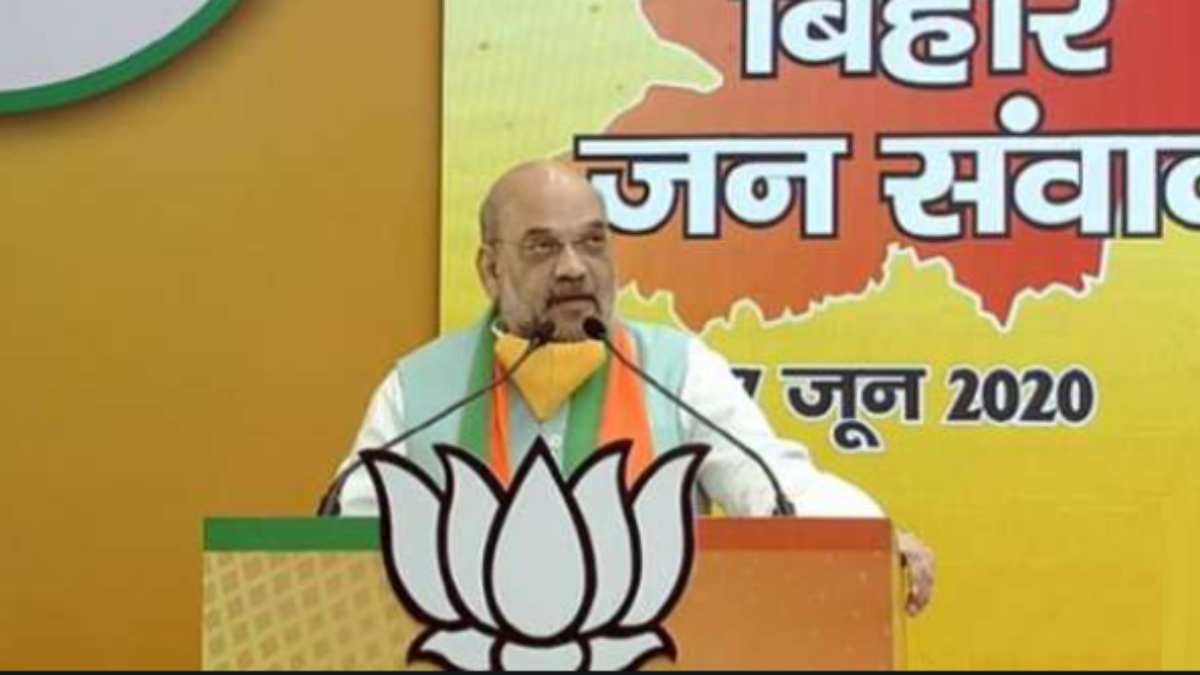
As the five-year term of the current Bihar Assembly expires on 12 November 2020, the BJP has started its virtual campaign, with Union Home Minister Amit Shah addressing the BJP workers in the state on Sunday. Chief Minister Nitish Kumar too joined the digital bandwagon when he addressed via video conference the elected representatives of the threetier panchayati raj organisations and urban bodies.
With Bihar having a rich online platform subscriber base, digital campaigns are becoming a new gamechanger in the state politics. As per a TRAI report, the number of mobile subscribers in Bihar is 8,42,21,710. The NITI Aayog chief has claimed the WhatsApp subscriber base in India has crossed 440 millions. In Bihar alone, there are 30 million WhatsApp subscribers. According to the latest (2 June 2020) report, the number of mobile sets in circulation in Bihar is over 15 crore (more than state’s population) and 60 per cent of them are having smartphones.
A senior Telecommunications Ministry official said: “About 372 out of 536 blocks in the state have already optical lines terminals (OTLs) installed. Some of these terminals cover more than one block. Seven thousand out of 8,500 panchayats have already digital links due to OTLs. Union Communication Minister Ravi Shankar Prasad had also encouraged telecom coverage to all the villages, and now even the poorest people in the rural and urban areas are having more than two mobile sets.”
With a good digital platform in place, Bihar is becoming the first state in the country to have a virtual electoral campaign this year. The political parties are going all-out to take the digital route to reach the voters during the pandemic, especially ahead of the coming assembly elections in the state. The Chief Election officer of the state has made it clear that the expenditure on the digital campaign will also be covered under the election expenses and the candidates will be asked to furnish details of expenses on digital platforms.
Meanwhile, the BJP and the JD-U have already started using digital platforms for their electoral campaigning. In the last two days, Nitish Kumar had contacted the mukhiyas, sarpanchas and ward councillors over video conferences, and communicated with the booth-level workers. The JD-U’s principal general secretary, R.C.P. Sinha, who returned after quarantine from his village, too contacted the local leaders through video conference.
State BJP president Sanjay Jaiswal also held meetings twice with the officebearers and members of the booth-level committees and advised them to get ready for the elections. Deputy Chief Minister Sushil Kumar Modi has categorically stated that the elections will be held on schedule, but the dates will be announced by the Election Commission.
While the BJP and the JD-U have already begun their digital drive, the Grand Alliance is not even initiated the process. Their squabbling and internal differences have already come out in the open. Former Chief Minister Jeetan Ram Manjhi has criticised Tejashwi Yadav and issued statements calling him “immature” and not caring for the views of alliance partners. The RLSP, led by Upendra Kushwaha, is in isolation in the Grand Alliance. The Vikashsheel Inssan Party, too, is literally out of the Grand Alliance with its president, Mukesh Sahni, maintaining a safe distance from it. Though the Congress is a part of the Grand Alliance, it has never been consulted or invited by Tejashwi Yadav. Even the three other partners — HAM(S), RLSP and VIP — held their meetings to prepare for the elections without inviting the Congress. They are focusing on the issue of the migrant workers as an assembly election agenda.
CM Nitish Kumar, already under attack from the Opposition for not doing enough for the state’s migrant labourers, digitally reached out to the elected leaders of panchayats and urban bodies to keep an eye on the situation of the migrant workers in their respective areas. “Over 40 lakh workers, from outside the state, have come, with all of them being put in the quarantine centres. The state government has spent Rs 8,500 crore on them, with each individual getting Rs 1,000. Each worker will get Rs 5,600 per fortnight for the maintenance in the camps,” the Chief Minister said. He blamed the governments and companies of the state from where these workers came to Bihar and alleged that the states, including BJP-ruled Gujarat and Congress-Shiv Sena’s Maharashtra, had failed to keep the workers safe.
Only time will tell if Nitish Kumar has managed to undo the Opposition’s charge of leaving the Bihari migrants on their own in other states, but the fact is that the JD-U and the BJP are already in the campaign mode, digitally. What’s also helping them is the fact that the majority of workers and leaders in the two parties are educated and techsavvy. The IT network of the BJP has expanded to the booth levels since the last Lok Sabha elections. The party had recruited a large number of IT professionals, establishing a well-organised IT office at party headquarters. With its strong IT network, the BJP is already far ahead of the divided Grand Alliance in the preelection campaign.
The electoral campaigning through mobile phones had been done in the past two years, but as a contingency measure, especially when a leader’s helicopter could not land due to bad weather or lost sight of the venue. But in the upcoming elections, it seems to be the common mode of campaigning. And herein lies the real advantage for the BJP and the JD-U.